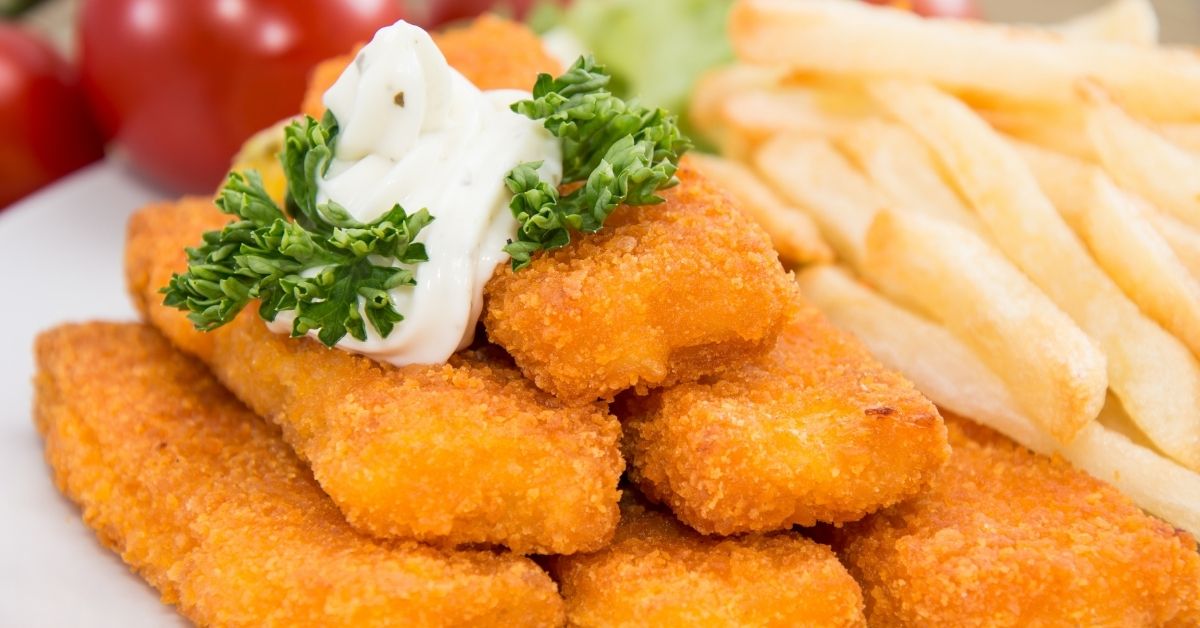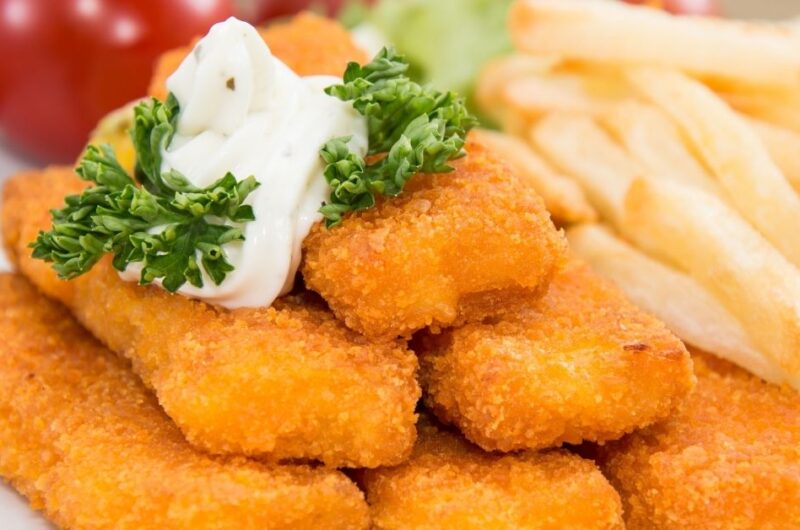Wondering how to reheat fried fish? You’ve come to the right place.
When it comes to reheating fried fish, which method is the best way to go – the deep-fryer, the oven, the skillet, the grill, or the microwave?
In this article, you’ll learn everything there is to know.
Crunchy and crispy on the outside and flaky, tender, and juicy, on the inside, fried fish is more than just a dish.
It’s a shoulder to cry on and a cheerleader when you’re feeling down. It’s the ultimate comfort food.
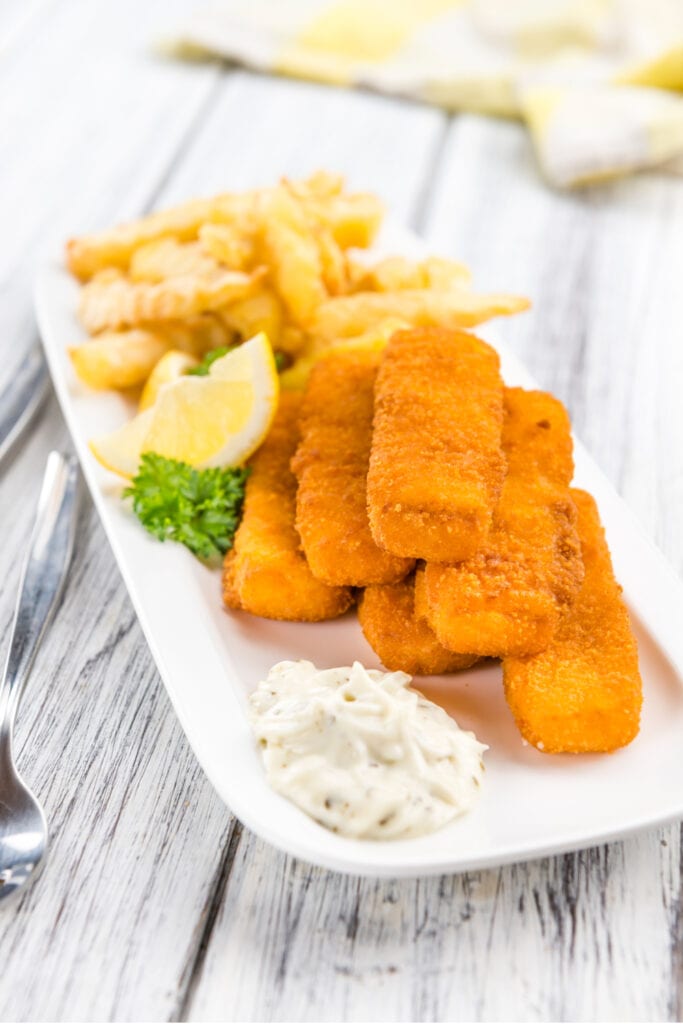
But can we say the same thing for leftover, reheated fried fish?
The quality may not be the same, but with the right methods, reheated fish can also be a catch. Let’s go!
Deep Fry the Fish
Let’s kick things off with, in my opinion, the most optimum way to reheat fried fish… if you don’t mind the calories.
Because it retains the crispy and crunchy nature of the batter, I find deep-frying the most suitable way to enjoy last night’s dinner.
It’s most probably the same method you used to cook the fish, so it only makes sense to reheat it the same way.
The only drawback is how high-caloric and greasy oil is. You can address the latter by patting it dry with a kitchen towel.
As for the calories, well, you can always go for a jog! 😉
How to Deep Fry Fish
1. Fill a deep-fryer or a heavy saucepan with 2 inches of oil. Preheat the oil to 350 degrees Fahrenheit.
2. Deep-fry the fish for 1-2 minutes, depending on its thickness.
3. Wrap the fish with a kitchen towel to absorb excess oil. Let it rest on a dish lined with paper towels to get rid of even more grease.
Tips:
- Be sure the fish isn’t too moist. When reheating refrigerated fish, give it time to thaw on the counter before deep-frying.
- Use a thermometer to get an accurate temperature for the oil. If the oil is not hot enough, the fish will retain too much moisture, making it soggy. Conversely, if the oil is too hot, you’ll burn the fish to a crisp.
- If you don’t have a thermometer, pay attention to the behavior of the oil.
- If the oil bubbles steadily when you dip a wooden spoon into it, it’s ready to go.
- If the oil bubbles way too vigorously or it starts to smoke, it’s overheated. Turn off the burner and let it cool down a bit.
- Don’t over-cook it, or it’ll be way too greasy. Just 1-2 minutes will do. Remember that you’re only reheating fish, not cooking it.
- Be careful when deep-frying! Oil splatters are extremely painful. Use a pair of tongs to gently drop the fish into the hot oil.
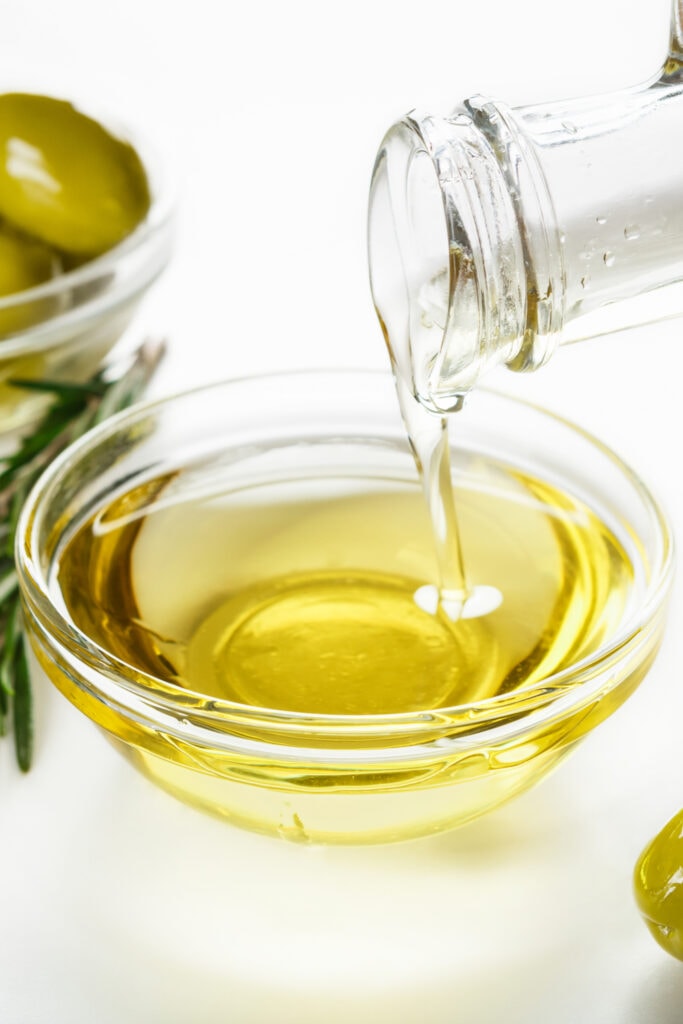
The Best Oil for Deep-Frying Fish
Stick to a mild oil with a high smoke point. Vegetable oil perfectly fits the bill. It’s flavorless, so it won’t impact the taste of the fish.
With a smoke point of up to 446 degrees Fahrenheit, trust that it can handle the heat.
It’s super affordable, to boot.
Out of all the vegetable oils out there, canola and peanut oil are the best for deep-frying. Grapeseed oil is good, too.
If you’re cooking trout, though, I suggest you try olive oil. Their flavors balance each other out beautifully.
Be sure to use extra light olive oil, as it has a higher smoke point than extra virgin olive oil and doesn’t have as strong a flavor.
If you want a healthier oil, though, you can use coconut oil. It has a lower smoke point – 400 degrees Fahrenheit, so be extra mindful to avoid overheating it.
Whatever your choice is, check the label and pick refined over unrefined oil.
Unrefined oil has more flavor, which may overpower the taste of the fish. It also has a lower smoke point than refined.
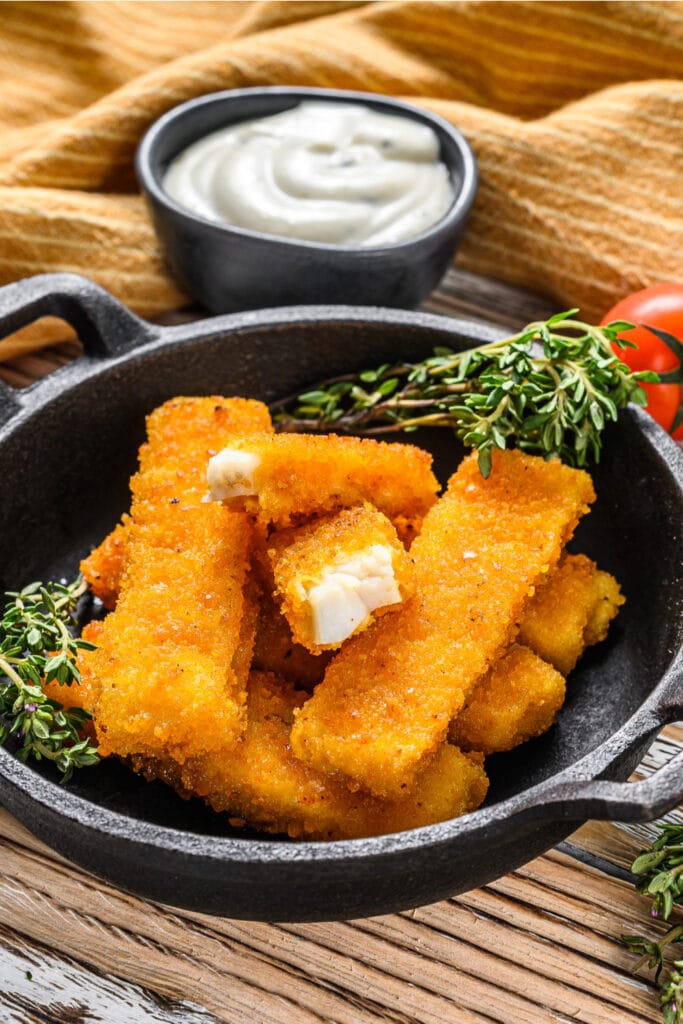
Reheat Using the Oven
If you’re super worried about all the excess oil that deep-frying brings, the oven is your best bet.
True, it’ll take longer, and it won’t yield as crispy and crunchy a fish as it would in the deep-fryer. But it’s a whole lot healthier and easier, and it’s almost effortless!
For this method, you can use either a standard oven or a toaster oven.
The standard oven is perfect for medium to large fish, while the toaster oven is best for smaller pieces.
How to Reheat Fish in the Oven
1. Preheat your oven to 350 degrees Fahrenheit.
2. Place the fried fish on a baking sheet lined with parchment paper or foil.
3. Reheat the fish for 10 to 15 minutes, flipping it over every 5 minutes. Test for doneness by sticking a thermometer into the center of the fish. It should be at least 145 degrees Fahrenheit.
Tips
- Let the fish thaw on the counter while waiting for the oven to preheat.
- Drizzle it with a bit of fat to keep it moist. A spritz of olive oil or a drizzle of clarified butter does wonders.
- Season the fish with spices and a splash of lemon or soy sauce to liven up its flavor.
- The length of reheating depends on the thickness of the fish. Test for doneness right after 10 minutes of reheating.
- If your fish is covered in a thick layer of batter, reheat it longer. To prevent the exterior from burning, cover the dish with aluminum foil.
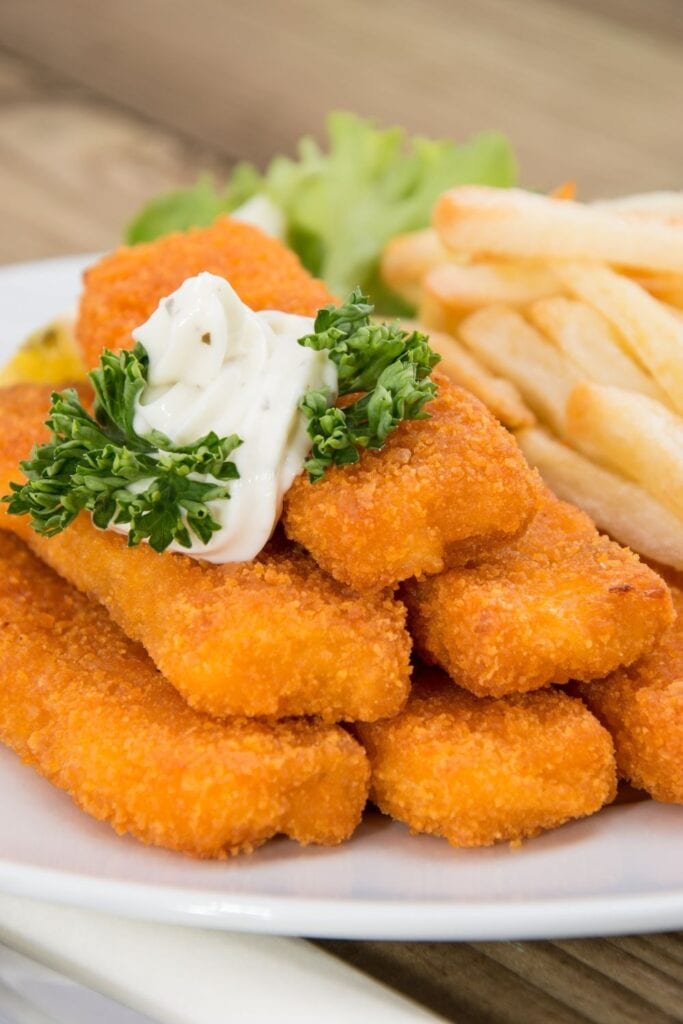
Reheating Using a Broiler
The oven’s broiler setting is another fantastic method to reheat fried fish.
In fact, it works even faster and yields an even better result. So, if your oven has a broiler function, go for this approach.
Because the broiler reheats the fish at a slightly higher temperature, you’ll get an extra crispy exterior and an even juicier interior.
Here’s How:
1. Find your oven’s broiler. It’s most usually located above the oven rack and right below the stovetop burners. Some have it in a completely different section, right below the actual oven.
2. If the broiler is up top, slide the oven rack into the highest slot, so it’s as close to the broiler as possible. If it’s at the bottom drawer, place the rack into the drawer’s lowest slot.
3. Turn on the broiler. It looks like a bright red strip of light, so you’ll definitely be able to tell when it’s activated.
Most ovens have an on-off broiler switch. If yours doesn’t have one, set it to 500 degrees Fahrenheit and leave the door slightly open so it won’t overheat.
Standard boilers take 5 to 10 minutes to preheat.
4. Lay the fish onto the broiler pan that comes with your oven. If you don’t have one, a baking sheet lined with aluminum foil will do. Leave some space between the fish and be sure the pieces don’t overlap or touch each other.
5. With the oven door slightly ajar, broil the fish for 2 to 4 minutes. Flip the fish over halfway through so that it’s evenly reheated.
Tips
- If you want to season the fish beforehand, stick to herbs and spices and avoid heavy marinades. Marinade and sauce drippings can cause a fire.
- Don’t use glass cookware as it can’t handle the extreme heat of the broiler. Don’t use non-stick cookware, either, as they can emit harmful chemicals at high temperatures.
- Spray the pan with a bit of oil to prevent the fish from sticking. It will also make the fish stay moist and juicy.
- Don’t line the baking sheet with parchment paper. Parchment paper burns at extreme temperatures. Use aluminum foil instead.
- Do not over-crowd the oven. Spread the fish evenly in a single layer so that each piece is exposed to the broiler.
- Place the pan or baking sheet in the broiler as it preheats. This will heat it up and create an even sear on the fish.
- Leave the oven door slightly open to allow steam to escape and prevent the fish from being soggy.
- Turn on the oven light so that you can monitor the fish closely and prevent smoke or fire. Never broil beyond 10 minutes.
- Use an oven thermometer to get an accurate broiler temperature.
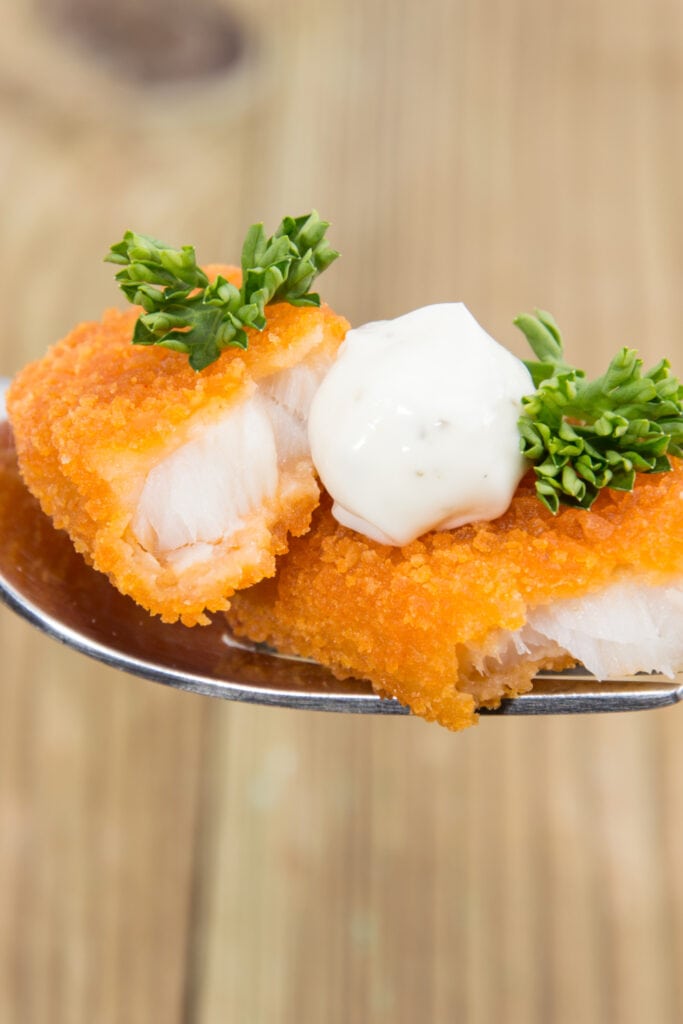
How to Reheat Using the Air Fryer
If you have an air fryer, forget the oven! Considering its relatively impressive results and how quick and easy it is to use, the air fryer trumps any other method.
With the air fryer, you’ll only need minimal oil to reheat fried fish.
It uses hot air instead of oil to reheat the fish, giving you an evenly cooked and perfectly delicious faux fried goodness.
Think of it as the ultimate hybrid of a deep-fryer and an oven!
Oh, and it gets the job done in no time, too. In as fast as 6 minutes, you’ll get crunchy and crispy batter on the outside, and flaky and juicy fish on the inside.
Here’s how:
1. Load the fish into the basket, allowing for space in between. Spritz a bit of extra light olive oil over the fish.
2. Air fry the fish at 320 degrees Fahrenheit for 4 minutes. Flip them over with a pair of tongs.
3. Increase the heat to 360 degrees Fahrenheit and reheat for 2 minutes more. Test for doneness by sticking a thermometer into the center of the fish. It should be at least 145 degrees Fahrenheit.
Tips
- Do not preheat the air fryer. It’ll increase in temperature as it reheats, which may cause the fish to overcook.
- Do not over-crowd the air fryer basket and make sure the pieces don’t touch or overlap each other. Otherwise, there won’t be enough space for the hot air to circulate which will result in uneven cooking. Some parts will be hot and crispy, others, cold and soggy.
- Flip the fish over halfway through, or in this case, after 4 minutes of cooking. This is so the fish is evenly cooked. You won’t want your fish to be nice and crispy on one side, and soggy on the other.
- While it’s not required to spray the fish with oil, I highly recommend it for a crispier outcome.
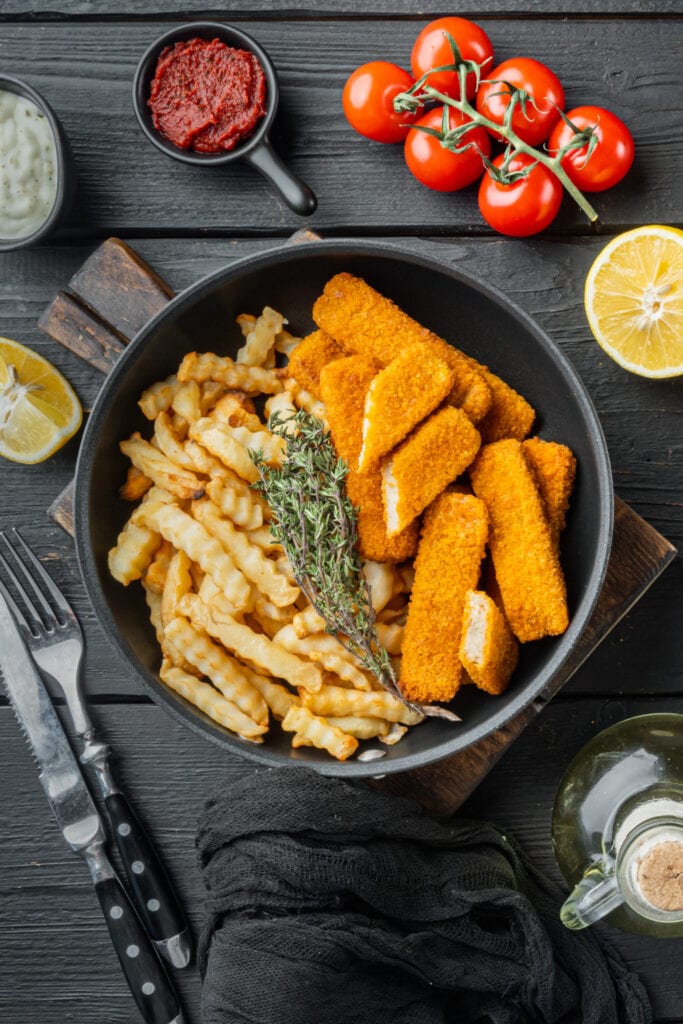
Reheating with a Frying Pan
Shallow frying is a terrific way to get that ultra-crispiness and extra fatty flavor, but without using too much oil.
Here’s how:
1. Heat a heavy skillet or frying pan over a low-medium flame. Coat the pan with 1/4-inch of oil and let it heat up for several minutes.
2. Shallow fry the fish for 1-2 minutes on each side, depending on its thickness.
3. Wrap the fish with a kitchen towel to absorb excess oil. Let it rest on a dish lined with paper towels to get rid of even more grease.
Tips
- Use clarified butter for extra richness and flavor.
- Preheat the pan before adding the oil.
- Don’t put too much oil or butter – just a few tablespoons will do.
- While you’ll grease the pan with oil, it’s better to use a non-stick pan for good measure.
- Let the fish thaw on the counter while waiting for the pan and oil to heat up.
- Be extra careful when cooking in hot oil! Gently drop the fish into the pan with a pair of tongs.
- Flip the fish over twice for an even more even cooking.
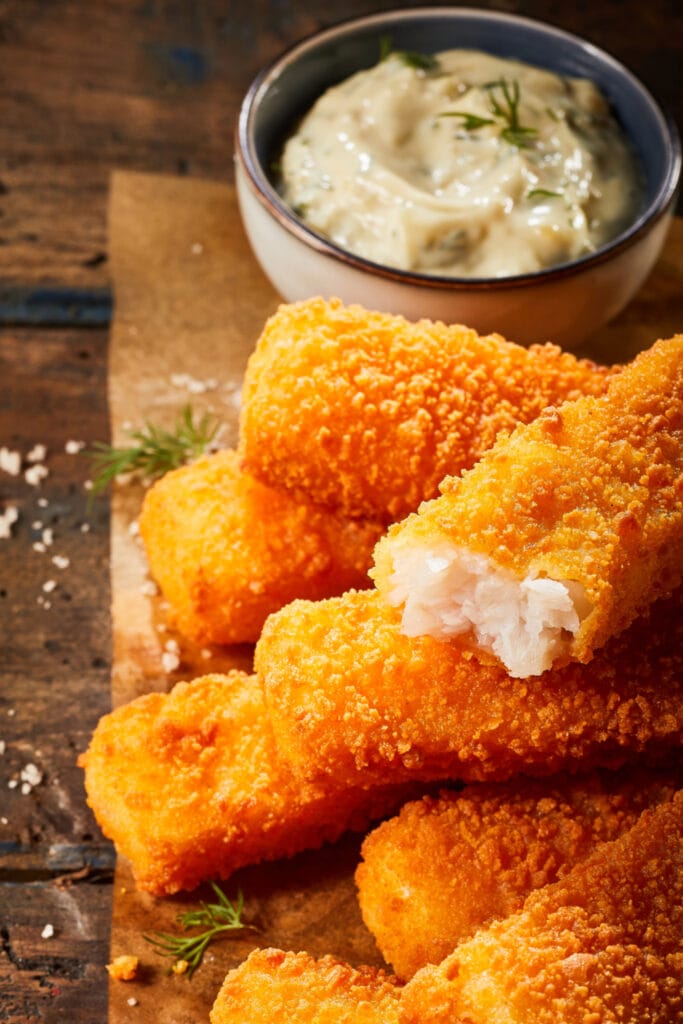
How to Reheat with a Grill
This may be the most difficult and longest method, but you can’t beat the smoky, charred flavor it gives fried fish. Here’s how:
1. Season the fish as you please. Wrap thick-battered with aluminum foil.
2. Grill for 45 minutes to 1 hour on low heat, turning the fish occasionally for even cooking.
Tips
- Be sure the grill is clean before use.
- Give the fish time to thaw before grilling.
- Wrap thick-battered fish with aluminum foil to prevent crumbling.
- Drizzle the fish with oil or melted butter for better flavor.
Can You Reheat Fried Fish in the Microwave?
While it’s absolutely the fastest and easiest way to reheat fish, I don’t recommend using the microwave.
One, it produces an awful smell. This might be okay if you live in a well-ventilated place, but for windowless spaces, such as an office or a small condo, this is a big no-no.
Two, it almost always results in soggy skin and dry meat.
However, if convenience is your top priority, and you don’t mind the fishy smell and the unpleasant texture, then go ahead. Here’s how:
1. Place the fish in a microwave-safe dish lined with paper towels.
2. Microwave at the lowest power at 30-second intervals, flipping it over at each interval.
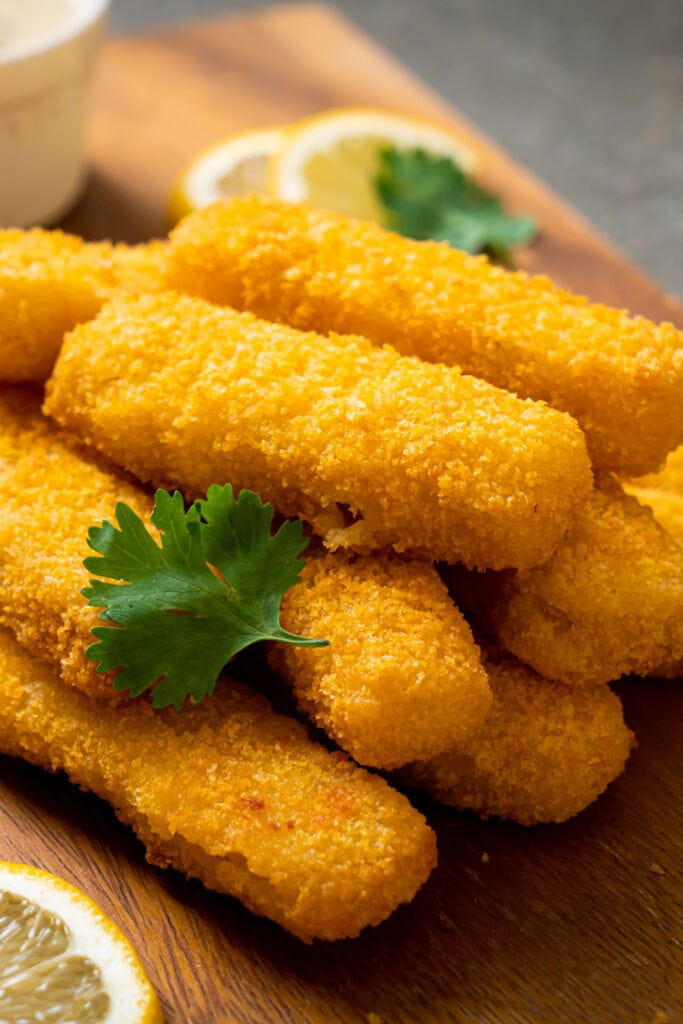
How Do You Reheat Fried Fish Without Drying It Out?
- When using the oven or broiler, cover the fish loosely with foil. This won’t only retain its moisture, but will also prevent your kitchen from smelling fishy.
- The thicker the cut, the more moist and tender it’ll be. Thin fish tends to dry out more quickly.
How to Store Leftover Fish
For maximum freshness, know the proper way of storing leftover fish.
1. Be sure it has cooled completely to room temperature. Store it in an airtight container lined with a paper towel. This will absorb excess moisture and keep the batter from getting soggy.
2. Refrigerate the fish for up to 3 to 4 days or freeze for up to a month.
3. If you’re reheating frozen fish, thaw it in the fridge overnight.
For faster thawing, seal it in a plastic bag and submerge it in cold water. You can also use the defrost function of the microwave.


